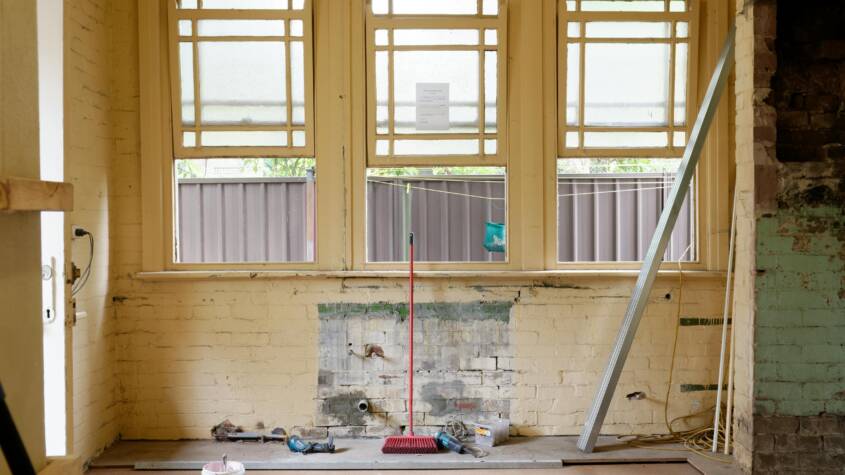
Home renovation is an exciting venture that many homeowners consider to enhance the function and appeal of their living spaces. A well-planned home renovation can significantly increase property value while creating a more enjoyable environment. Understanding the essentials of this process is key to achieving satisfying results.
From small updates, like refreshing paint colors, to major overhauls, such as kitchen remodels or adding new rooms, renovations can transform a house. It is important for homeowners to identify their goals and budget from the start to avoid overspending and ensure the projects align with their vision.
Researching design trends, consulting professionals, and planning timelines can streamline the renovation experience. By approaching the project with knowledge and preparation, individuals can maximize their investments and enjoy the journey of transforming their homes.
Planning Your Home Renovation
Effective planning is crucial for a successful home renovation. By assessing needs and goals, establishing a budget, considering design elements, selecting the right contractor, and understanding regulations, homeowners can ensure their renovation progresses smoothly.
Assessing Needs and Goals
Homeowners should begin by identifying their specific needs and goals for the renovation. This might include increasing space, improving functionality, or enhancing aesthetics.
A clearly defined list can help prioritize changes. Questions to consider might include:
- What areas require improvement?
- Are there specific styles or materials in mind?
- Is the renovation aimed at boosting property value or personal enjoyment?
Creating a vision board can also assist in aligning choices with desired outcomes.
Budgeting and Financing
Establishing a budget is a critical step in the planning process. Homeowners should account for both expected and unforeseen expenses.
Key components to include are:
- Materials
- Labor
- Permits
Securing financing options such as loans or savings can provide the necessary funding. It is advisable to set aside an additional 10-20% of the budget for contingencies.
Creating a spreadsheet can help track estimated versus actual expenditures.
Design and Layout Considerations
Design plays a significant role in any renovation. Homeowners should consider how the new design will fit with the existing structure.
Key elements to evaluate include:
- Flow of space
- Natural light
- Traffic patterns
Utilizing design software or consulting with a designer may offer visual clarity.
Moreover, selecting colors, materials, and fixtures early can streamline the renovation process and maintain a cohesive aesthetic.
Selecting the Right Contractor
Choosing a qualified contractor can make or break a renovation project. Homeowners should seek recommendations and conduct thorough interviews.
Aspects to consider include:
- Experience in similar projects
- Licensing and insurance
- References and reviews
Requesting detailed quotes from multiple contractors can provide clarity and help in decision-making. A compatible working relationship is essential, so open communication should be prioritized.
Understanding Permits and Regulations
Navigating permits and regulations is often necessary depending on the project’s scale. Homeowners need to research local building codes and zoning laws.
Common permits might include:
- Electrical work
- Plumbing changes
- Structural modifications
Consulting with both the contractor and local authorities can ensure compliance. Failure to obtain the necessary permits could result in fines or complications during the renovation.
Executing the Renovation
Executing a home renovation involves careful planning and management. Key areas include scheduling, material selection, and maintaining construction quality.
Scheduling and Timeline Management
Creating a detailed schedule is essential for a successful renovation. The first step is to establish a timeline that includes all phases of the project, from design and permitting to construction and final inspections.
Using project management tools can help track progress. It’s important to allow buffer time for unexpected delays, such as weather conditions or material shortages. Communication with contractors and subcontractors ensures everyone is aligned on deadlines and responsibilities.
Here is a sample timeline structure:
| Phase | Duration | Notes |
| Design | 2 weeks | Initial concepts |
| Permitting | 3 weeks | Local regulations |
| Construction | 6-12 weeks | Varies by scope |
| Final Inspection | 1 week | Address any issues |
Material Selection and Procurement
Choosing the right materials significantly impacts both the budget and the aesthetic of the renovation. Researching options ahead of time can help in making informed decisions.
It’s advisable to create a list of essential materials and their specifications. Prioritize quality while considering costs. Visiting local suppliers for samples can provide insights into the appearance and durability of materials.
Establish relationships with reliable vendors to ensure timely procurement. Confirm lead times and availability to avoid project delays. It can be beneficial to order materials in advance, especially for specialty items.
Overseeing Construction Quality
Maintaining high construction quality is crucial for a successful renovation. Regular site visits allow for ongoing assessment of the work being done.
During these visits, it’s important to verify that the construction meets the agreed-upon specifications and building codes. Address any concerns immediately to prevent small issues from escalating.
Hiring an independent inspector for critical phases can provide an extra layer of assurance. Documenting each stage of the process helps track any changes or issues that arise, ensuring the project stays on course.
Low-Cost SEO Packages: A Comprehensive Guide to Affordable SEO Solutions
In today’s digital age, having a strong online presence is essential for any business, whe…










